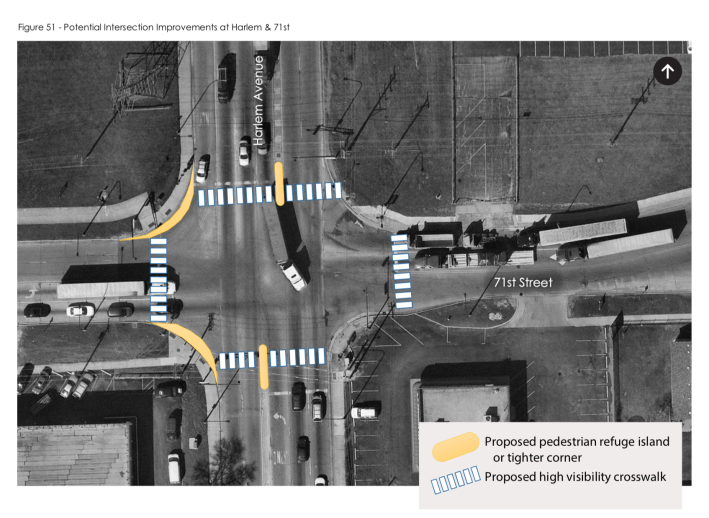Pace announced today that it will be axing three low-ridership bus routes after this Friday, but said it will be reinvesting the funding into creating more express service and new Pulse rapid bus lines. Also today, the suburban transit agency announced that it has completed the Central Harlem Avenue Corridor Study in preparation for implementing Pulse service along the corridor.
Bus Route Cancelations
The three bus routes, along with nine other poorly performing bus services, were approved for the chopping block as part of Pace's 2019 budget, approved last fall. The first three routes to go are:
- Route 661, which connects portions of southwest Westmont to BNSF Metra Line Westmont station. In 2018 it saw a measly 12-16 riders a day.
- Route 809, which connects the Village of Richmond to Metra’s Milwaukee District-North Line’s Fox Lake station. Ridership has been in single digits.
- Route 824, which provides a link between destinations in eastern Bollingbrook and the Metra’s BNSF Line’s Lisle station. It has seen an average ridership of only 11-16 riders a day.
Later in 2018, the remaining nine low-ridership routes will be 86ed. Those include Route 209 (Saturday service only), Route 304, Route 326, Route 348 (Saturday service only), Route 362, Route 504 (Saturday service only), Route 532, Route 540 (Saturday service only), and Route 546 (Saturday service only). Read more about those lines here.
Pace says the cuts will save $1.2 million, which will go towards a $1.7 million service enhancement effort with the goals of reducing overcrowding, improving on-time performance and supporting the launch of the Milwaukee Avenue Pulse Line, which is slated for this fall.
The Central Harlem Avenue Corridor Plan
Working in cooperation with the Regional Transportation Authority, Pace has finished the Central Harlem Avenue Corridor Study, which focuses a ten-mile stretch of Harlem from 71st Street in Bridgeview near Toyota Park soccer stadium to North Avenue in Elmwood Park. The agency has identified Harlem as a priority location for Pulse service, which will include limited stops and deluxe bus stops with bus tracker displays, bike racks, and other amenities.
“As a state route that carries large volumes of automobile and freight traffic each day, Harlem Avenue provides a vital north-south transit connection for communities in north, west and south Cook County,” said RTA director Leanne Redden in a statement. “The character of the corridor varies throughout the study area, including everything from dense residential neighborhoods to large-scale industrial properties.”

The year-long planning project was guided by a steering committee made up of 30 members, including reps from municipalities, the transit agency boards, councils of government, and other agencies involved with transportation planning. Input was also collected from residents during open houses held along the corridor.
The final document includes strategies to pave the way for Pulse service, as well as improving existing transit service along the corridor. The study took into account current transportation, demographic and land use conditions, plus local development plans. It identifies 19 possible Pulse stop sites and various improvements that could be made to make walking safer and more convenient -- such as sidewalk extensions, bus bulb-outs, and pedestrian islands -- which would make it easier to access the bus stops. There's also a section that looks at the potential for transit-oriented development at key intersections.
![]()
Did you appreciate this post? Consider making a donation through our PublicGood site.






